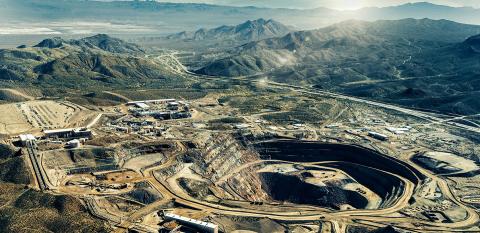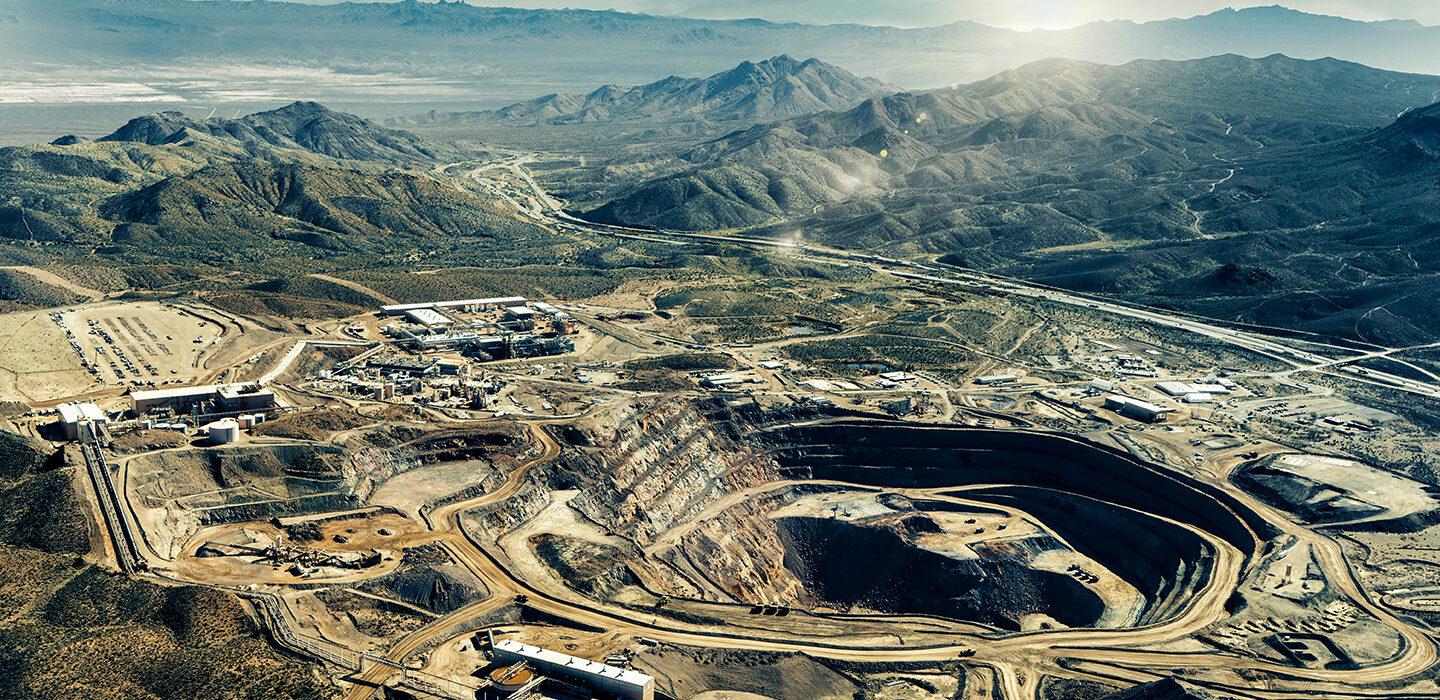
In spring 1949, three prospectors armed with Geiger counters set out to hunt for treasure in the arid mountains of southern Nevada and southeastern California. In the previous century, those mountains yielded gold, silver, copper and cobalt. But the men were looking for a different kind of treasure: uranium. The world was emerging from World War II and careening into the Cold War. The United States needed uranium to build its nuclear weapons arsenal. Mining homegrown sources became a matter of national security. They found bastnaesite, a mineral bearing fluorine, carbon and 17 curious elements known collectively as rare earths. The prospectors sold their claim to the Molybdenum Corporation of America, later called Molycorp. The company was interested in mining the rare earths. During the mid-20th century, rare earth elements were becoming useful in a variety of ways: Cerium, for example, was the basis for a glass-polishing powder and europium lent luminescence to recently invented color television screens and fluorescent lamps.
For the next few decades, the site, later dubbed Mountain Pass mine, was the world’s top source for rare earth elements, until two pressures became too much. By the late 1980s, China was intensively mining its own rare earths — and selling them at lower prices. And a series of toxic waste spills at Mountain Pass brought production at the struggling mine to a halt in 2002. But that wasn’t the end of the story. The green-tech revolution of the 21st century brought new attention to Mountain Pass, which later reopened and remains the only U.S. mine for rare earths.
Mountain Pass mine gets revived
After the Ivanpah Dry Lake mess, the Mountain Pass mine changed hands again. Chevron purchased it in 2005, but did not resume operations. Then, in 2008, a newly formed company called Molycorp Minerals purchased the mine with ambitious plans to create a complete rare earth supply chain in the United States.
Unfortunately, Molycorp “was an epic debacle” from a business perspective, says Matt Sloustcher, senior vice president of communications and policy at MP Materials, current owner of Mountain Pass mine. Mismanagement ultimately led Molycorp to file for Chapter 11 bankruptcy in 2015. MP Materials bought the mine in 2017 and resumed mining later that year. By 2022, Mountain Pass mine was producing 15 percent of the world’s rare earths.
MP Materials, too, has an ambitious agenda with plans to create a complete supply chain. And the company is determined not to repeat the mistakes of its predecessors. “We have a world-class … unbelievable deposit, an untapped potential,” says Michael Rosenthal, MP Materials’ chief operating officer. “We want to support a robust and diverse U.S. supply chain, be the magnetics champion in the U.S.”
One of the biggest issues plaguing this extraction process is its inefficiency, says Santa Jansone-Popova, an organic chemist at Oak Ridge National Laboratory in Tennessee. The scavenging of these metals is slow and imperfect, and companies have to go through a lot of extraction steps to get a sufficiently marketable amount of the elements. With the current chemical methods, “you need many, many, many stages in order to achieve the desired separation,” Jansone-Popova says. That makes the whole process “more complex, more expensive, and [it] produces more waste.”
Under the aegis of the DOE’s Critical Materials Institute, Jansone-Popova and her colleagues have been hunting for a way to make the process more efficient, eliminating many of those steps. In 2022, the researchers identified a ligand that they say is much more efficient at snagging certain rare earths than the ligands now used in the industry. Industry partners are on board to try out the new process this year, she says.
In addition to concerns about heavy metals and other toxic materials in the waste, there are lingering worries about the potential impacts of radioactivity on human health. The trouble is that there is still only limited epidemiological evidence of the impact of rare earth mining on human and environmental health, according to Ali, and much of that evidence is related to the toxicity of heavy metals such as arsenic. It’s also not clear, he says, how much of the concerns over radioactive waste are scientifically supported, due to the low concentration of radioactive elements in mined rare earths.
Such concerns get international attention, however. In 2019, protests erupted in Malaysia over what activists called “a mountain of toxic waste,” about 1.5 million metric tons, produced by a rare earth separation facility near the Malaysian city of Kuantan. The facility is owned by Lynas, which ships its rare earth ore from Australia’s Mount Weld to the site. To dissolve the rare earths, the ore is cooked with sulfuric acid and then diluted with water. The residue that’s left behind can contain traces of radioactive thorium.
Link to the full story at Science News: Rare earth mining may be key to our renewable energy future. But at what cost?

